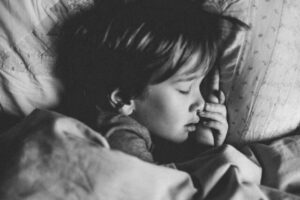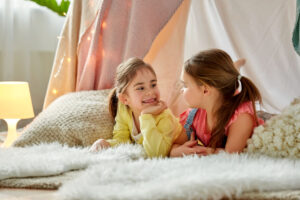
Table of Contents
For parents of children with autism, creating a safe and comfortable environment is paramount. One crucial aspect of this is finding the right bed. The needs of an autistic child can often vary widely and significantly from those of other children, which can make this task challenging. However, a variety of options are available, each designed to address specific needs. This should help you choose a bed for kids with autism.
Understanding Autism and Sleep Difficulties
Children with autism often face challenges related to sleep. These issues may include difficulty falling asleep, irregular sleep-wake patterns, or frequent night awakenings. These sleep disturbances are often linked to sensory sensitivities, anxiety, and difficulty transitioning. Therefore, when choosing a bed for a child with autism, it’s important for families to consider factors that can alleviate these challenges for better sleep. Some children may benefit from a bed with high sides or a canopy for a more secure, enclosed feel. Others may find a weighted blanket comforting, as it provides a soothing pressure. Beds with integrated rails can prevent falls during restless sleep, while mattress choices can cater to sensory preferences, like firmness or softness. By understanding the unique sleep difficulties associated with autism, parents can better tailor their child’s bedtime environment to promote restful, uninterrupted sleep.
How the right bed can help a child with autism sleep
Selecting the right bed can significantly improve sleep quality for children with autism. A well-chosen bed can address sensory sensitivities, providing comfort and reducing anxiety. For instance, a bed with high sides or a canopy can create a sense of security, reducing sleep disruptions caused by fear or unease. A weighted blanket can offer a comforting, hug-like pressure that calms the nervous system and encourages sleep.
Furthermore, beds with integrated rails can prevent falls during restless sleep, thereby maintaining safety and confidence throughout the night. Lastly, the right mattress can cater to individual sensory preferences – a firm mattress might provide stability and reassurance, while a soft one might offer a soothing, plush comfort. By carefully considering these factors, parents can create a sleep environment that not only suits their family and child’s unique needs but also promotes the deep, restorative sleep necessary for their overall well-being.
Sensory Beds: A Safe Haven
Sensory beds are a popular choice for children with autism. They offer a controlled sleeping environment that caters to the sensory processing challenges often associated with autism. One such example of sensory stimulation is Cubby Beds, modern safety beds designed for kids and adults with Autism and other special needs.
A unique feature of some sensory beds is the compression alternative to weighted blankets. Special Supplies offers a sensory bed sheet that provides a cool, soft and comfortable sleeping experience.
Tent Beds: A Controlled Environment
Tent beds are another excellent option for autistic children. This type of bed provides a controlled and calming sleeping environment similar to sensory beds but can be customized with the right accessories.
ZPod Autism Bed: A Sensory Sleep Space
The zPod Autism Bed is another notable option. It allows parents to create an individualized enclosed sensory sleep space. The bed features intelligent lighting control, white noise generation, and an air filter.
Safety Beds: Ensuring Restful Nights
Safety beds are designed to provide a secure environment for children with special needs. The Safety Sleeper, for instance, is a fully enclosed bed system that provides the parent with peace of mind by ensuring the child and room is safe and secure for a night’s rest.
Kinderkey’s Bearhugzzz SpaceSaver bed is another example of a safety bed designed for vulnerable children and adults. This bespoke design can fit into any other bedroom, closet or space, promoting safe sleeping.
Conclusion
Choosing the right bed for a child with autism can be a challenging task, but the variety of options available caters to every need. Whether it’s a sensory bed, tent bed, zPod, or safety bed, each one offers unique features designed to provide comfort, safety, and a good night’s sleep for your child.
Remember, each child is unique, and what works best for one kid might not work for another. It’s essential to understand your child’s specific needs before choosing a bed. Consult with healthcare professionals, therapists, and other parents for advice and help in making the best choice.
- Autism Routine Disruption in Adults: Coping Tips - July 16, 2024
- Autism and Obsession: An Overview - July 16, 2024
- Autism and Taking Clothes Off: Management Tips - July 16, 2024



